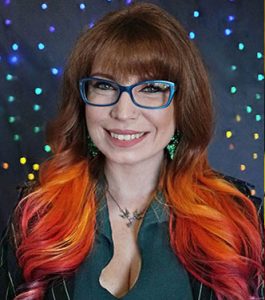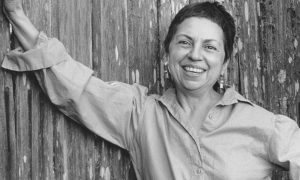How does a queer and indigenous person who is white-passing and interpreted as heterosexual, navigate the borderlands of indigenous/non-indigenous and monosexual/non-monosexual?

Figure: Mandy Henningham, a queer indigenous researcher and lecturer of indigenous social sciences at the University of Sydney.
Mandy Henningham explores this question through a narrative analysis of personal accounts and reveals to readers, the nuanced experience of identity multiplicities in her 2021 paper titled ‘Blak, Bi + and Borderlands: An Autoethnography of Multiplicities of Indigenous Queer Identities Using Borderland Theory’. Blak is an Aboriginal and Creole word that refers to Aboriginal people. It is used to reclaim the racial stereotypical notions of ‘Blackness’ of Aboriginal persons. Bi + refers to queer identities other than the monosexual sexualities (gay and lesbian). Borderlands is a concept that was put forth by Gloria Anzaldua, a self-identified ‘border woman’ who grew up in the Mexico-America border where she created herself by borrowing from the two cultures. This area between the different identities that a person holds, where hybridity exists, is what Anzaldua referred to as the borderland.

Figure: Gloria Anzaldua, a queer Chicana culture and feminist theorist who wrote extensively about in-between and mixed identities.
“Living between polarising identities may result in one or often both communities misreading one’s identity leaving people invisible or twice-rejected” (Nehhingham, 2021, p. 13).
An individual who exists on the fringes of their identity is accepted by neither group. By crossing the border to join one community, they face the risk of being caught and expelled by them. For example, if a bisexual person were to, having faced erasure and phobia from the queer community, turn to the heterosexual community for acceptance and a sense of belonging, they would be expelled by them for being queer. They exist in the borderland between communities, always negotiating and enacting their identities to be accepted by members of the community they are with.
The person’s internalised phobias, how they perceive themselves, their expectations for how others will perceive them, their desire for acceptance from the community, self-identity expression and self-sabotaging behaviour to lose potential social connections, all cyclically impact each other.
References
Henningham, M. (2021). Blak, bi+ and borderlands: An autoethnography on multiplicities of Indigenous queer identities using borderland theory. Social Inclusion, 9(2), 7-17. https://doi.org/10.17645/si.v9i2.3821
Orozco-Mendoza, E. F. (2008). Borderlands theory: Producing border epistemologies with Gloria Anzaldúa (Doctoral dissertation, Virginia Tech). Retrieved from: https://vtechworks.lib.vt.edu
Webinar: Indigenous and LGBTIQ+: Challenges of Social Inclusion in Australia – YouTube
by Anugraha


No Comments
Leave a comment Cancel